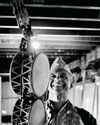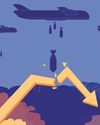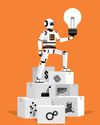CATEGORIES
Kategorien

good vibrations
Explore the season's best beach-ready looks in their element: Costa Rica's breezy Pacific shores

LOVE ETERNAL
The magic of Italy creates the setting for designer Athena Calderone to celebrate two major life moments

Safari at Sea
On the first sailing of ecotourism brand andBeyond's new cruise in the Galápagos, Chris Schalkx learns a lesson in conservancy

VIENNA WAITS FOR YOU
The charm of Austria's modest, beautiful capital has always been in its timelessness. But with provocative museums, unconventional food and wine, and a raft of clever hotels, the city is moving forward

HERE COMES THE SUN
Aussie designers Nicky and Simone Zimmermann share their favorite spots in Sydney

WHAT'S COOKING IN KIGALI
No longer just the gateway for gorilla trekkers, Rwanda's capital is fast becoming a hub of pan-African and global flavors

CRAFT WORK
Throughout Lisbon, Portuguese artisanship lives on through historic brands and inventive young designers

why we travel
EXPERIENCES THAT CHANGE THE WAY WE SEE THE WORLD

Roots Revival
In Tuscon, Betsy Andrews finds a community preserving its culinary future through ancient ways

go with the flow
On the central Oregon Coast, Alice Gregory finds easygoing small towns, forest-framed beaches, and an unhurried way of life refreshingly far removed from the world of hipsters and influencers

A Quiet Place
While trekking through a remote sweep of the Serengeti, Rebecca Misner learns how to live in the moment

In Tune
Jamming with nomadic Nepali performers, Justin Goldman discovers the common ancestry of folk music around the globe

Word of mouth
Osaka, the wilder cousin of hip Tokyo and precious Kyoto, is getting a well-timed tune-up

DON'T PAY MORE THAN NECESSARY TO PREPARE YOUR TAX RETURN
Many DIY taxpayers have access to free options, but whether you qualify depends on the fine print.

THE HIGH STAKES OF A TRADE WAR
INFORMATION ABOUT THE MARKETS AND YOUR MONEY

INTERVIEW: PLANNING SUMMER TRAVEL? YOU'LL HAVE LOTS OF COMPANY
To save money, book your tickets well ahead of time, use technology and avoid popular destinations.

How to Survive Market Mayhem
AMONG my missions is to advise smart readers against doing dumb things out of haste or panic.

TEMPER THE RISK IN YOUR TECH STOCKS
A recent rout in AI stocks has some investors thinking more defensively.

HOW TO HELP VICTIMS OF LOS ANGELES WILDFIRES
Recovery could take years, and victims will need assistance long after the fires have been extinguished.

FUND INVESTORS: DO A LITTLE DIGGING TO KNOW WHAT YOU OWN
Investors should make sure to read the prospectus carefully and look under the hood at the fund's actual holdings.

WHY YOU MAY NEED A MEDALLION STAMP
Transferring securities from one account to another often requires this extra step.

IS A ROBO ADVISER RIGHT FOR YOU?
Use our guide to assess the growing array of low-cost, computer-driven investment managers.

WHAT TO EXPECT IN THE HOUSING MARKET
Most likely, mortgage rates will stay above 6%, and home prices will climb moderately. But that shouldn't dissuade buyers who are ready to make a move.

THE BEST REWARDS CREDIT CARDS
Whether you want simple cash-back rewards or points to put toward travel purchases, we have something for you.

In Defense of Defense Stocks
OVER the past few years, global wars have been on the rise. Russia's invasion of Ukraine, a sovereign European nation, has killed hundreds of thousands and cost hundreds of billions of dollars. The October 7, 2023, attack by Hamas has led to death and destruction not just in Israel and Gaza but in Lebanon, Syria, Yemen and Iran. The Armed Conflict Location & Event Data index shows that global conflicts have doubled in five years.

TRY THESE TURNAROUND STOCKS
A struggling company with a strong makeover plan can pay off for intrepid investors.

WHAT RETIREES NEED TO KNOW ABOUT TAXES
Take steps to avoid a surprise tax bill and underpayment penalties.

A Smart Way to Empower People With Disabilities
An ABLE account can improve your loved one’s quality of life.

TEACHING HOW TO REPAIR RATHER THAN REPLACE
Through this group's workshops, volunteers help community members fix household items.

Retirees Are Less Satisfied
RECENTLY, I wrote about the results of the Retirement Confidence Survey, conducted annually by the Employee Benefit Research Institute (see \"Living in Retirement,\" Dec.). EBRI followed up with a deeper dive into spending trends among retirees with its 2024 Spending in Retirement Survey. I spoke with Bridget Bearden, research and development strategist with EBRI and author of the study, about its conclusions.